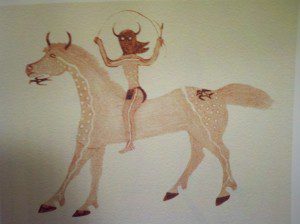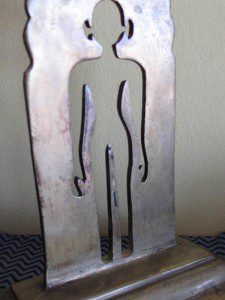
Dreams require action. As I observed in Conscious Dreaming, in indigenous dreaming traditions, dreamwork is always oriented toward action. The principal task of the shaman, as a dream specialist, is to confirm the meaning of the dream and clarify the steps the dreamer should now take to honor the dream.
Take the case of a childhood vision that Black Elk, the Lakota holy man, had left unhonored. He was initially afraid to tell anyone about what he had seen. At last he confided in a wichasa wakon, a holy man, who told him: “You must do what the bay horse in your vision told you to do. You must perform this vision for your people. You must make the horse dance for the people to see. If you do not do this something very bad will happen to you.”
They proceeded to enact Black Elk’s vision. This became a major community undertaking. Scenes from the vision were painted on tepees. Black Elk was required to fast and cleanse himself in the sweat lodge. He taught chosen singers the songs from the vision so that they could perform them during the enactment. Others in the tribe were cast as characters from the dream, human, spirit or animal, and painted and costumed accordingly.
In Black Elk Speaks, John G. Neihardt observed that “even the horses seemed to be healthier and happier after the dance.”
Black Elk’s big dream wasn’t reduced by analysis or assimilated into the familiar structures of everyday life. As Mary Watkins noted in her wonderful book Waking Dreams, “the attempt was made to bring the daily life into relation with the vision”.
Related post: Black Elk, the poet and the dream passport

